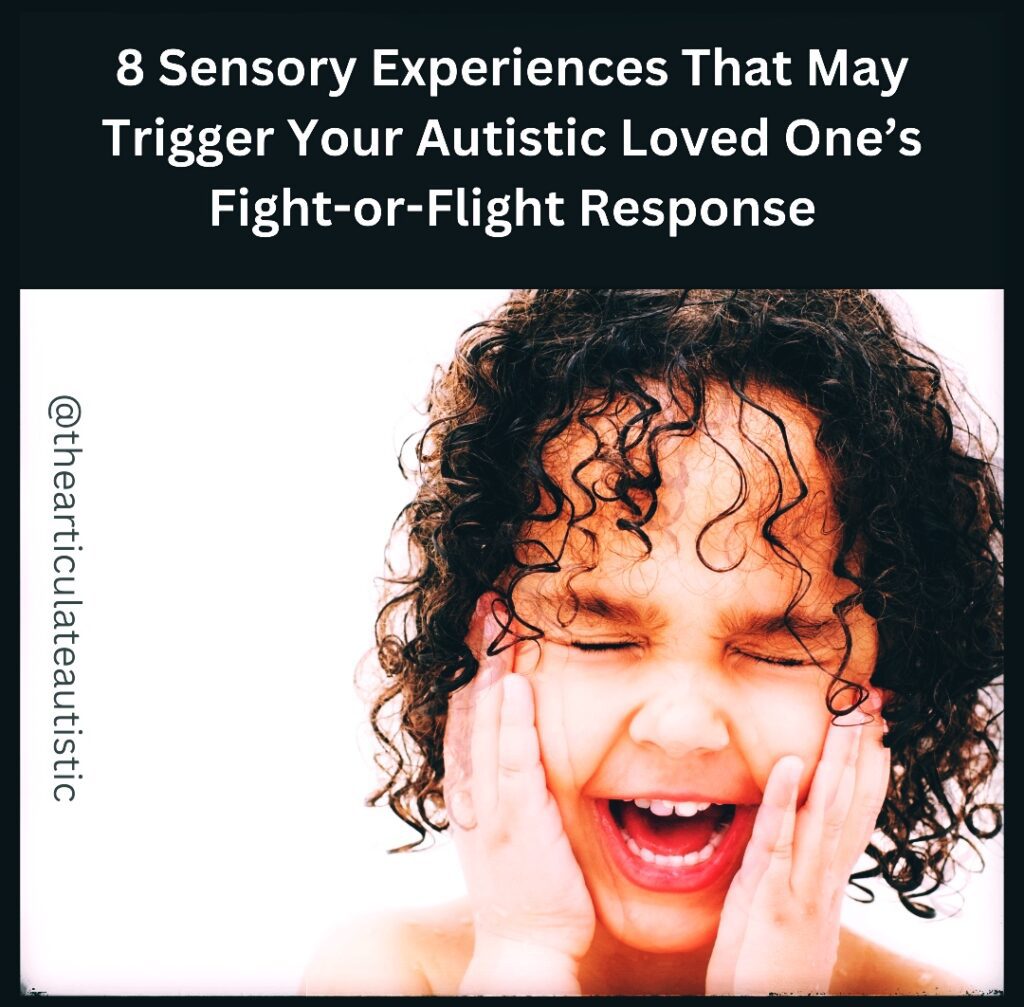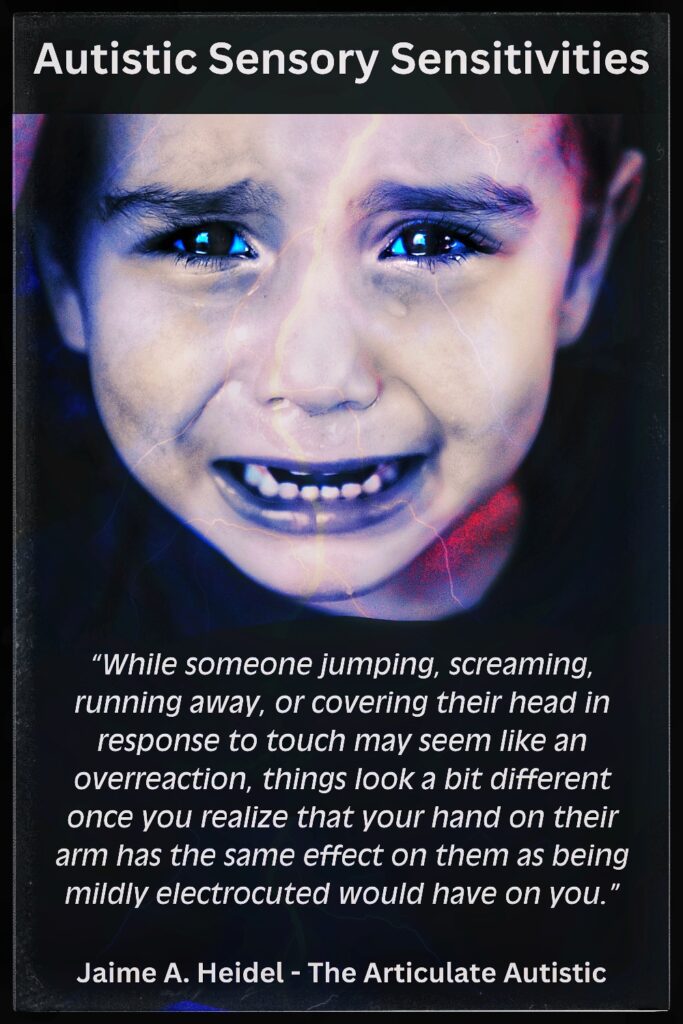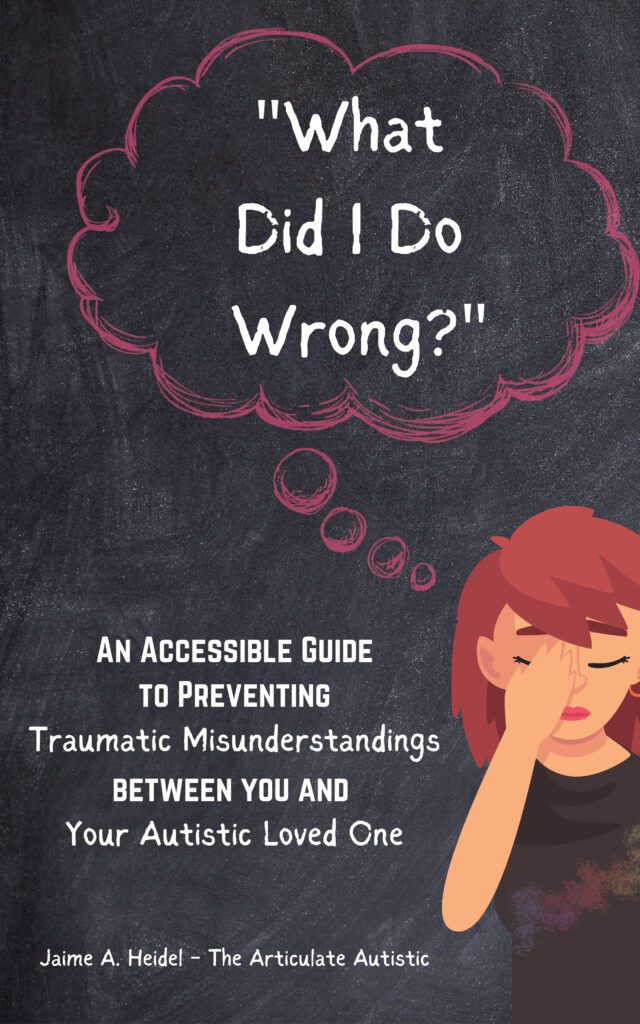8 Sensory Experiences That May Trigger Your Autistic Loved One’s Fight-or-Flight Response

When your autistic loved one exhibits distressing behaviors such as screaming, sobbing, kicking, or hitting, you may believe their intentions are purposeful, even malicious.
But what if the behavior isn’t something they’re doing and in control of, but rather the result of something happening to them–that is invisible to you as a neurotypical person?
A study published in Spectrum: Autism Research News, revealed that the fight-or-flight branch of the autonomic nervous system (ANS) is overactive in autistic children, which causes elevated anxiety levels.
This means that the world around them, while comfortable enough for you, may feel like a constant barrage of overlapping sensory information their brains struggle to process, leading to meltdowns, shutdowns, and other distressing behaviors.
Here are some common sensory experiences that may trigger your autistic loved one’s fight-or-flight response:
- Strong odors
Strong odors such as perfume, laundry detergent, soap, certain foods, and even body and breath odors can become so overwhelming that they cause a physical reaction in autistic people.
While a typical person may wrinkle their nose and move away from the smell, it won’t usually interfere with their ability to think and work.
For an autistic person, however, their ability to function may be compromised (including their ability to explain what they’re reacting to) until they or the smell is removed.
- Too much sensory information at once
The autistic brain often cannot tell the difference between important and not-so-important sounds. This means every sound, foreground, background, ambient, and otherwise, receives the same level of attention with nothing automatically filtered out.
An autistic person can go into fight-or-flight mode (which may trigger distressing behaviors or a meltdown) when too much auditory information comes in at once.
Some examples of too much sensory information at once are, traffic noises, cutlery clanking, overlapping conversations, dogs barking, lawnmowers whirring, etc.
All of that information becomes an overwhelming cacophony that, instead of being automatically processed and filed, sends panic signals to the brain.
- Being touched suddenly
Since many autistic people are hypersensitive to touch, and we are often predisposed to have anxiety, a sudden tap on the back or a clasp on the shoulder can trigger a fight-or-flight response.

While someone jumping, screaming, running away, or covering their head in response to touch may seem like an overreaction, things look a bit different once you realize that your hand on their arm has the same effect on them as being mildly electrocuted would have on you.
- Certain sounds
According to a study published in Frontiers of Psychiatry, 90 percent of autistic people have atypical sensory experiences, resulting in hypersensitivity (over-responsiveness) or hyposensitivity (under-responsiveness) to sensory stimuli.
For the hypersensitive autistic person, sounds such as a fork scraping, a child screeching, a dog barking, eating noises, fire or car alarms, the telephone ringing, door knocking, the hum of fluorescent lights, etc., can trigger a fight-or-flight response.
- Visual clutter
Visual clutter can be overwhelming to your autistic loved one because their brain might not be able to fully process and make sense of all of the sensory information coming in from their eyes.
Furthermore, if they’re a slow visual processor, they may struggle with finding objects directly in front of them, which may cause additional panic if someone asks them to pick an individual object out of the clutter.
For example, “Hey, Jodi. Go get me the scissors on the office table.”
Jodi goes into the office to get the scissors and is met with a desk loaded with 40 objects. No matter how hard she tries, her brain cannot differentiate and lock onto ‘pair of scissors’ amidst all of that visual clutter.
“Hey, Jodi. What’s taking so long? Just bring me the scissors, and stop mucking about!”
Visual clutter plus the inability to find the object plus someone being frustrated with her for not being able to find it plus Jodi’s frustration at her own inability to find said object results in her collapsing to the floor, sobbing, shaking, and rocking back and forth.
To the untrained observer, this may look ‘dramatic’ or come across as ‘attention-seeking behavior’. For Jodi, it feels like the end of the world.
- Textures
Sensory sensitivities in autistic people can cause everyday textures such as dry towels, burlap, gauze, sponges, wool, lace, and Styrofoam to feel as intolerable as sandpaper scraping against a freshly asphalt-torn knee would feel to a neurotypical person.
- Tastes
Many autistic people have avoidant-restrictive food intake disorder (ARFID) due to their extreme sensitivity to the taste and texture of certain foods.
If you’ve ever wondered why your autistic loved one prefers processed foods to whole foods, it’s because the taste and texture of those foods rarely change. Eating these foods feels safe because nothing comes as a surprise.
Fruits and vegetables, on the other hand, can taste different each time depending on brand, type, location grown, ripeness, etc.
- Temperature
The autonomic nervous system (the same system that triggers fight-or-flight) is also responsible for regulating body temperature. Oftentimes, the atypical function of this system in autistic people results in a feeling of being too hot or too cold, which can lead to chronic sensory overload.
How to Help Your Autistic Loved One Manage Sensory Overload
- Believe them
First and foremost, believe your autistic loved one when they express how they’re feeling and experiencing the world. When they sense that you take them seriously and are there to help them, they’ll feel safer and more connected to you.
- Make a plan
While your autistic loved one is calm, regulated, and able to give you their full attention, make a plan for what to do before a meltdown occurs. This may entail coming up with a ‘code word’ or ‘code gesture’ your loved one can use to indicate distress before it becomes overwhelming, having headphones, sunglasses, and sensory items on hand to reduce sensory overload in the moment, and removing them from the situation or away from the stimuli as soon as reasonably possible.

- Focus on comfort
Many autistic people instinctively know how to soothe and self-regulate when it comes to managing sensory overload. You may notice it in ‘stimming’ gestures such as rocking, flapping, humming, swaying, or using a stim toy (sensory aid).
Unfortunately, the functional need autistic people have for stimming is still not widely understood by society, and autistic individuals who stim in public are often shamed for it–or worse, forced to undergo behavior modification classes to “correct” it!
- Reduce demand
If your autistic loved one has been living in various stages of fight-or-flight for years, they’re likely in autistic burnout, and they are going to need time to recover. During this recovery time, reduce demands, rebuild trust, and have them focus only on what needs to be done (such as school or work duties).
The Takeaway
Sensory overload, autonomic nervous system differences, and living in a constant state of fight-or-flight are challenging, to say the least. The good news is that with time, understanding, and a focus on meeting sensory needs, your autistic loved one can experience emotional regulation, reduce their constant fear state, and enjoy a more peaceful life.
Learn more about how your autistic loved one thinks and experiences the world. Pick up your copy of my book, “What Did I Do Wrong?” – An Accessible Guide to Preventing Traumatic Misunderstandings Between You and Your Autistic Loved One!




